Best carbon road bikes 2025: Our pick of the best racing and endurance road bikes
Carbon road bikes combine meticulous weight saving, geometry tweaking and aerodynamic sculpting to rule the road
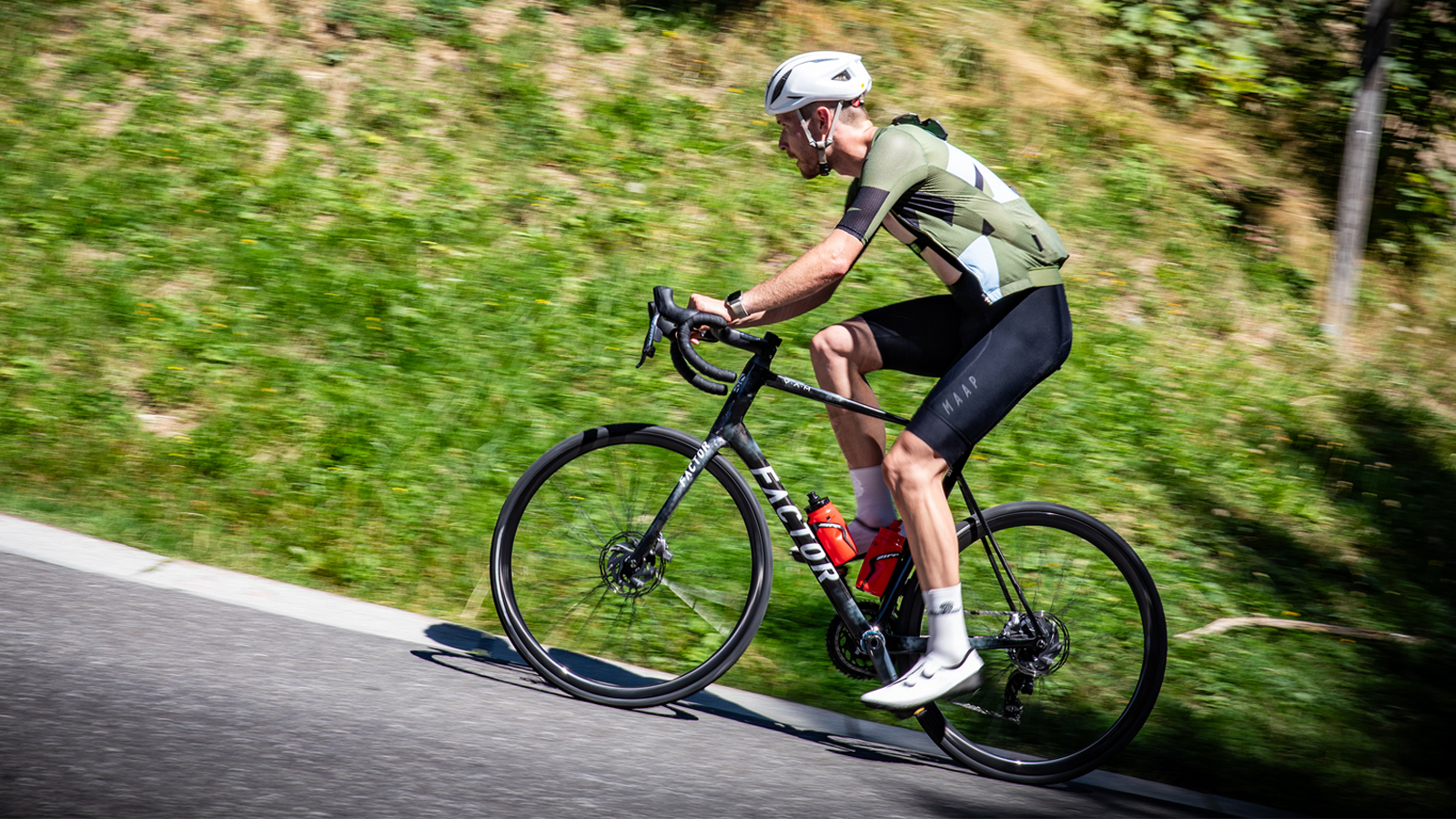
The best carbon road bikes offer a wide range of capabilities. They can be low weight or super-aero and be raced by the pros, but carbon fibre bike frames can also be designed for endurance rides or on/off road adventures.
Carbon fibre is the go-to material for fabrication of many of the best road bikes and its low weight for the strength it provides means that it's used for many bike components, such as the best road bike wheels and finds its way into groupsets and other components too.
So the best carbon road bikes include the cream of the crop, but carbon fibre is also found in many budget road bikes. There's plenty of trickle-down from top spec carbon bikes to more affordable specifications, so don't be deterred by the price tags of some of the bikes below.
Here, we've rounded up our pick of the best carbon bikes across a range of riding styles. Lower down, we also have more background to help you to choose the best carbon road bike for you.
Quick list
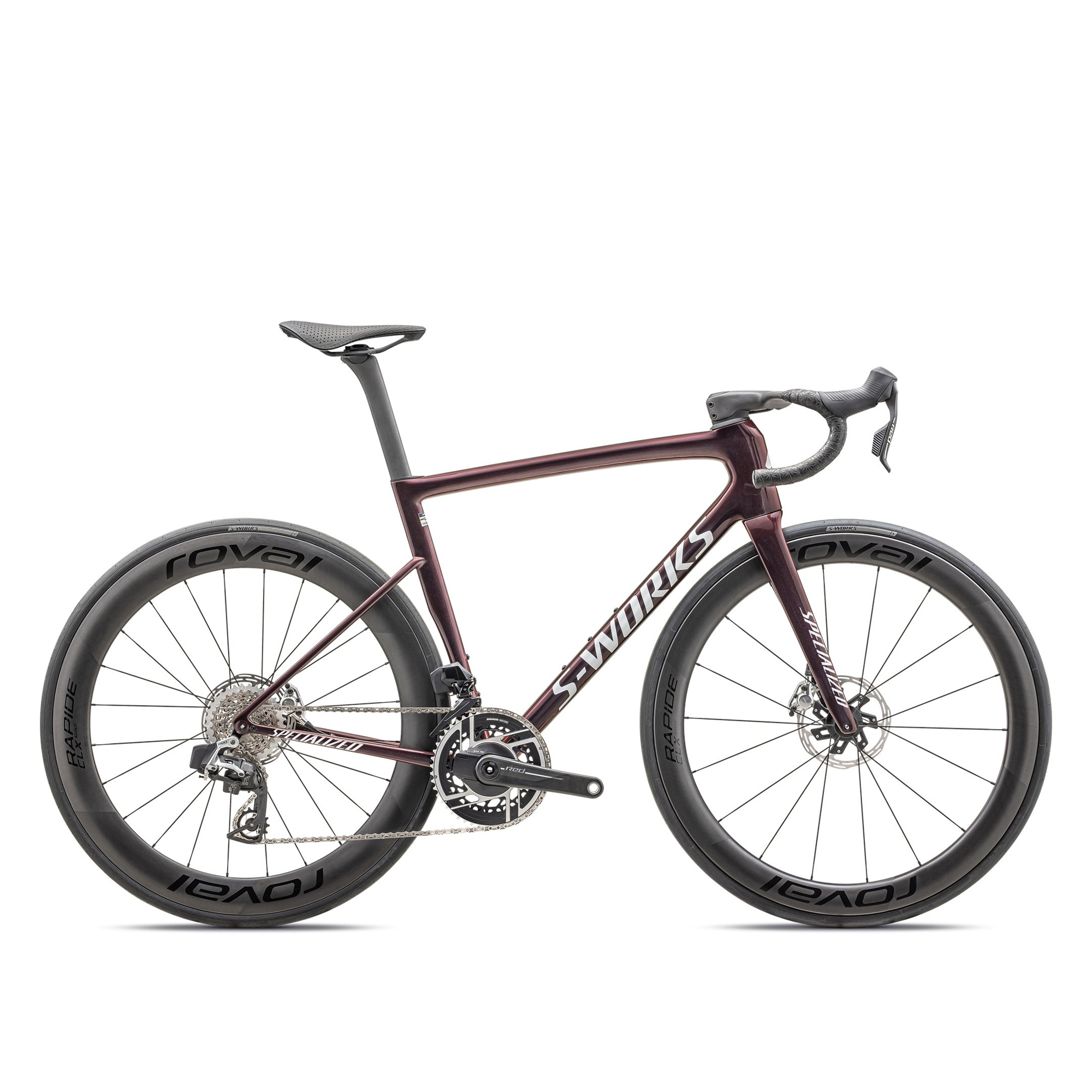
The latest Tarmac SL8 is comfortable to ride, while being market-leading in both aerodynamics and weight.

The Canyon Endurace range offers bikes from pro level down to affordable carbon.
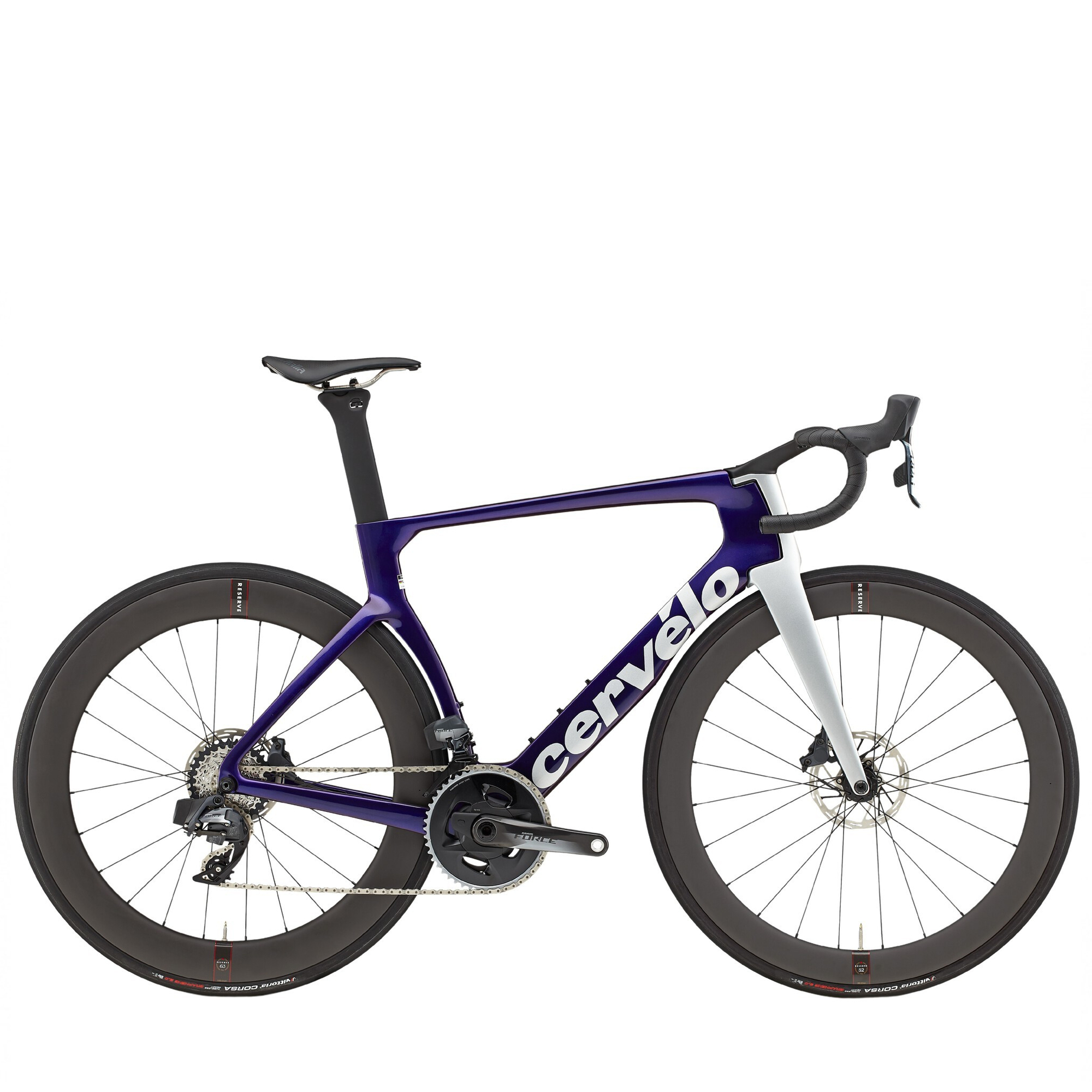
The Cervélo S5 is as fast as it looks and has the pro-level results to prove it.
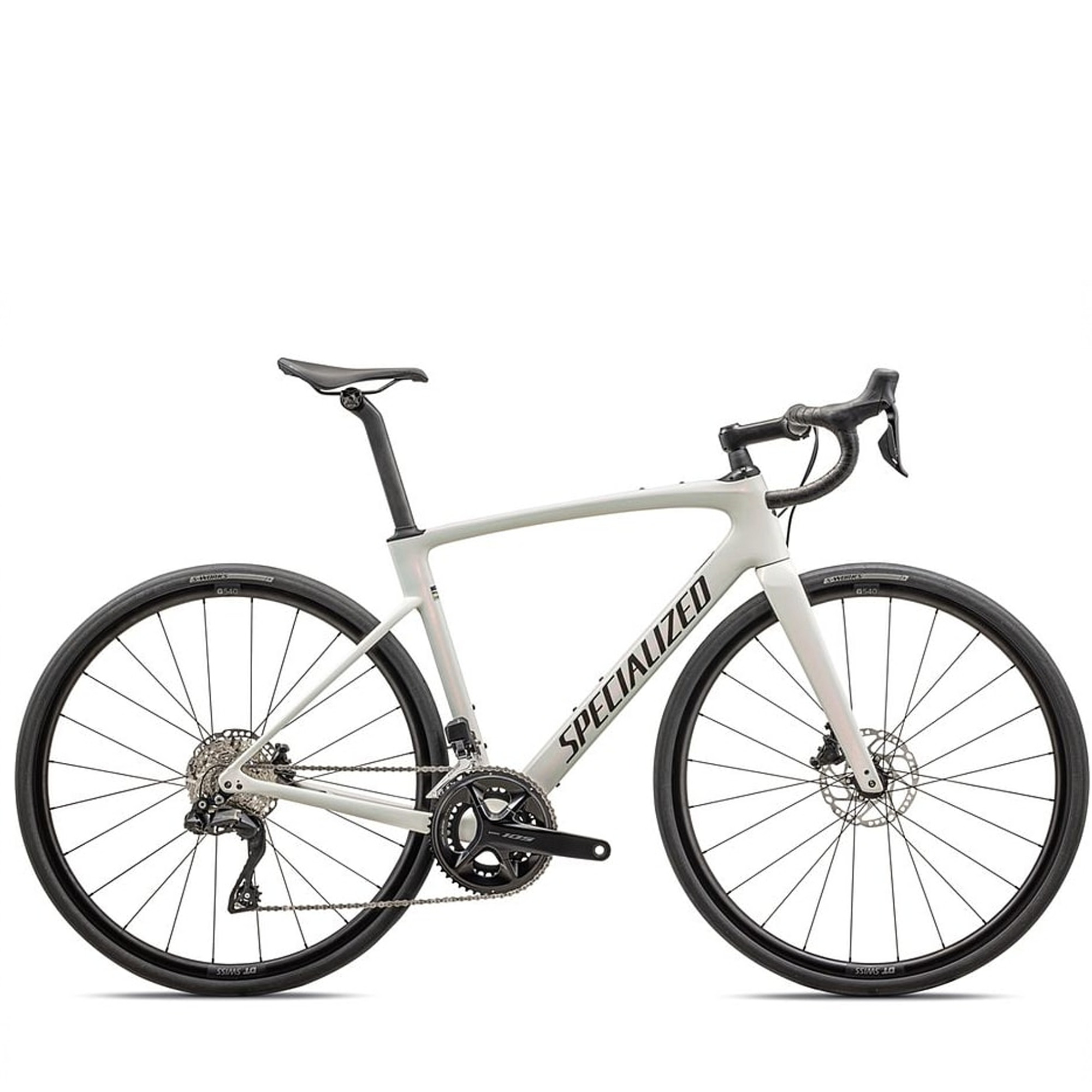
The latest iteration of the Specialized Roubaix is lighter, more aero and more comfortable, with fenders and wide tyre clearance too.

The Factor O2 VAM weighs under 7kg but is also stiff, making it a climber's dream.
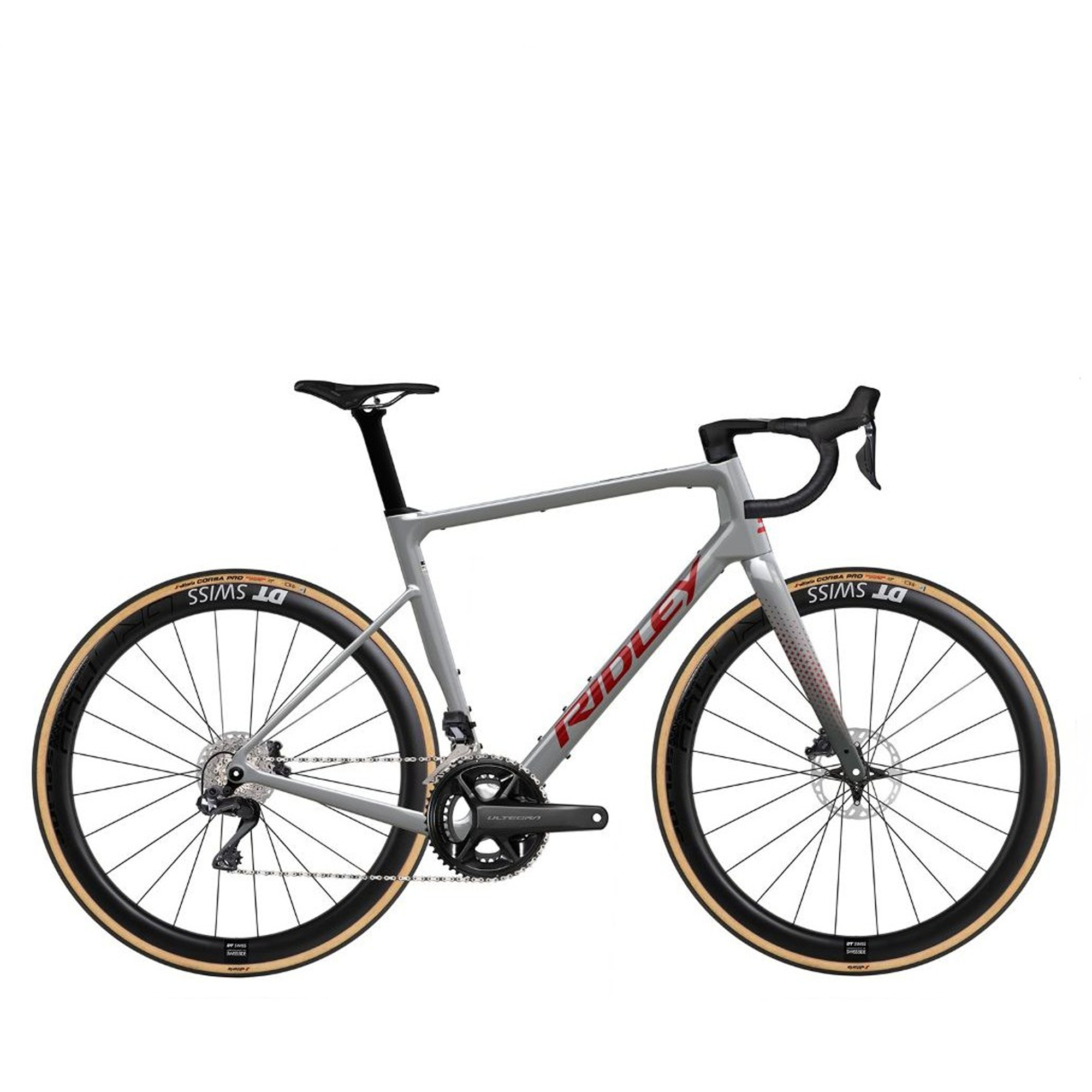
With 40mm tyre clearance and wide spec choice you can set the Grifn up for on or off-road riding.
Best carbon fibre road bikes available today
Best carbon road bike overall
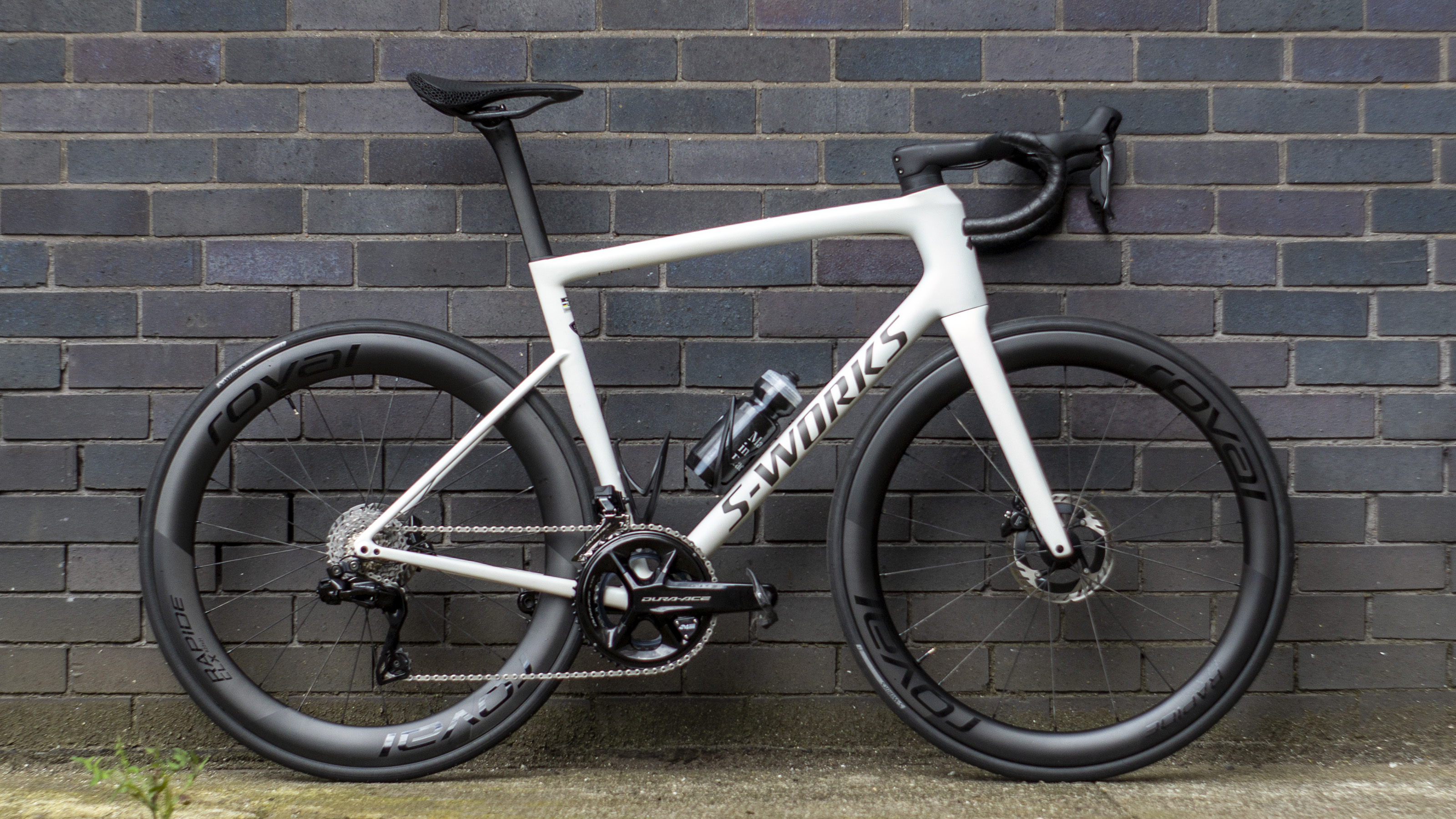
Specifications
Reasons to buy
Reasons to avoid
✅ You want a race-ready bike: The Tarmac has the palmares to support its premium billing.
✅ You want low weight and aerodynamics: The Tarmac SL8 is a prime example of the modern lightweight/aero bike class.
❌ You want a cheaper option: The Tarmac SL8 goes from pretty expensive for the Expert spec to very expensive for the S-Works model.
❌ You want to choose your cockpit geometry: Specialized's one-piece bar and stem preclude adjustment, and you can't choose the dimensions when purchasing. The Expert spec does have a two-piece cockpit though.
Specialized has hit the lightweight/aero sweetspot with the Tarmac SL8, which improves the front end aerodynamics while adding comfort from a slimmed-down seat tube area. Available in either Shimano Dura-Ace or SRAM RED AXS builds, the top spec Tarmac SL8 dips under the UCI 6.8kg weight limit so it can be right on the limit on the start line.
With a rider aboard, the Tarmac SL8 was, by a small margin, the most aero of 11 superbikes we wind tunnel tested, and it was also the lightest.
The power transfer is as good as you'd expect from a pro-level bike. The compromise in higher spec models is a one-piece cockpit, which reduces adjustability, although this is a common feature of most modern performance bikes. Specialized doesn't let you choose your bar geometry, crank length or other features.
The top S-Works spec is an expensive proposition. Although lower specs are somewhat more affordable, there's not the depth to the SL8 range that some other bikes offer, so even the entry-level Tarmac SL8 Expert is still an expensive bike.
For more details on why the Tarmac SL8 is our favorite carbon road bike, head over to our full Specialized S-Works Tarmac SL8 review.
Best budget carbon bike

Specifications
Reasons to buy
Reasons to avoid
✅ You want a broad range of price points: The carbon Endurace starts with affordable specs and goes up to pro level bikes
✅ You want ride comfort: With 35mm tyre clearance and most specs equipped with the VCLS split shaft seatpost, you can expect a comfortable ride
❌ You want low weight: Lower spec Endurace models weigh significantly over 8kg
❌ You want a quiet ride: We experienced some rattling from the in-frame tool wrapper
The Canyon Endurace range covers a broad range of price points, with carbon bikes ranging down to much more affordable specs than the premium Endurace CFR Di2 which we reviewed and three levels of carbon fibre on offer: CF SL, CF SLX and CFR. There's even an alloy Endurace frame that sits below the carbon bikes in the range.
As with all Canyon bikes, you get a high pec for the price, with even the lowest carbon spec including a 12-speed Shimano 105 groupset and DT Swiss wheels. Move up the range and you can expect electronic shifting and carbon wheels. Most specs include the Canyon VCLS split shaft seatpost which improves saddle compliance and comfort.
While we weighed the Endurace CFR at 7.2kg, lower spec bikes are closer to 9kg, so there's quite a bit of extra weight, although the frame would be a good candidate for upgrades. CF SLX and CFR grade frames include internal storage in the top tube, but even the CF SL frame has mounts for a top tube bag.
Read our full review of the Canyon Endurace CFR Di2 for more details.
Best carbon aero bike
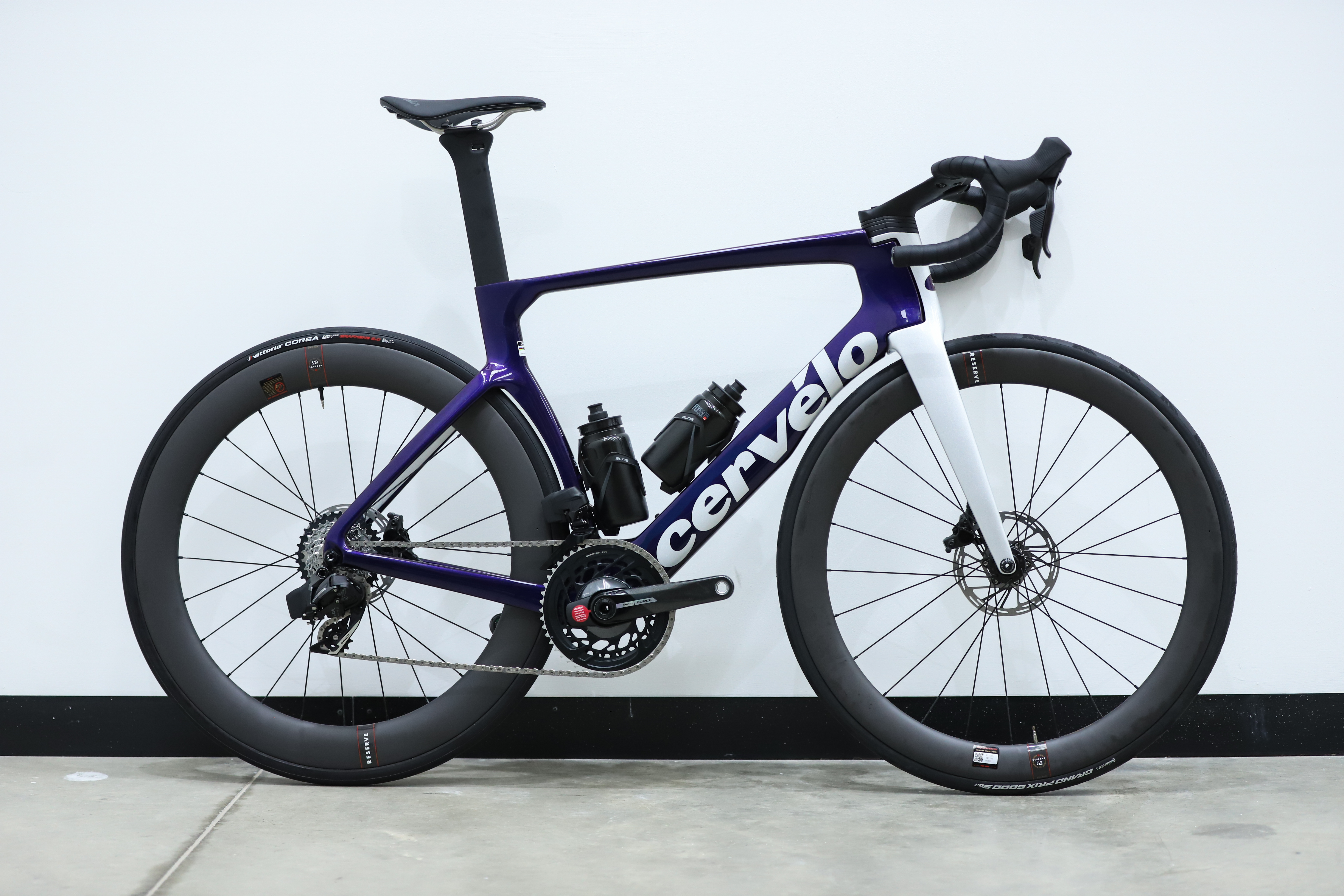
Specifications
Reasons to buy
Reasons to avoid
✅ You want an aero bike that looks fast: The S5's head-turning looks are backed up by its aero credentials
✅ You can hack the ride position: The low stack and long reach require flexibility for rider comfort
❌ You are looking for ride compliance: The S5 doesn't make many compromises to ride comfort
❌ You want low weight: Fast on the flat, the S5's weight may hold you back if where you ride is hillier
The Cervelo S5 has the looks as well as the performance to back that up, as we found in our 11-bike wind tunnel test, where it was the most aero of the pack in a zero yaw headwind.
There's a very narrow head tube, thanks to the bayonet fork and the rest of the frame is equally narrow in frontal profile. The Y-shaped handlebars are two-piece, which is unusual even in high-spec bikes that don't aim for peak aerodynamics.
The S5 is incredibly fast on flatter roads, although at over 8kg, there's some excess weight that shows on climbs. Despite the aero frame, there's still space for 34mm tyres, which allows riders to temper the frame's unforgiving ride and near-vertical aero seatpost.
Even the lowest spec of the S5 costs close to $10k/£10k though, so it's a premium option.
You can read more in our Cervelo S5 review.
Best carbon endurance bike

Specifications
Reasons to buy
Reasons to avoid
✅ You want a comfortable endurance ride: Front and rear comfort are built into the design
✅ You want a low weight endurance bike: Specialized keeps the weight down despite the compliance zones
❌ You want hidden cabling: The Future Shock headset means that cables and hoses are externally routed from the bars
❌ You want low maintenance: There's more complexity to Future Shock than a standard headset design
Endurance bikes are built for ride comfort and the Specialized Roubaix SL8 delivers that in spades, thanks to front and rear microsuspension systems.
While full suspension, as seen on some gravel bikes is usually heavy, Specialized's Future Shock system is low profile and low in weight. The front Future Shock 3.0 head tube builds 20mm of travel at the handlebars. In higher spec bikes, it's tunable and can be locked out while riding, while lower spec Roubaix bikes get a version that can be workshop-adjusted using tokens.
At the rear, AfterShock adds compliance via a lowered seatpost clamp and compliant seatpost. In addition, you can fit 40mm tyres and there are now mudguard mounts for the first time.
The Roubaix's frame is now designed to be aerodynamic and it's lighter and more compliant too. The only disappointment is that the Future Shock headset precludes internal cables, which would make the bike even more aero as well as giving it a more modern appearance.
Read our Specialized Roubaix SL8 Expert review for more.
Best lightweight bike
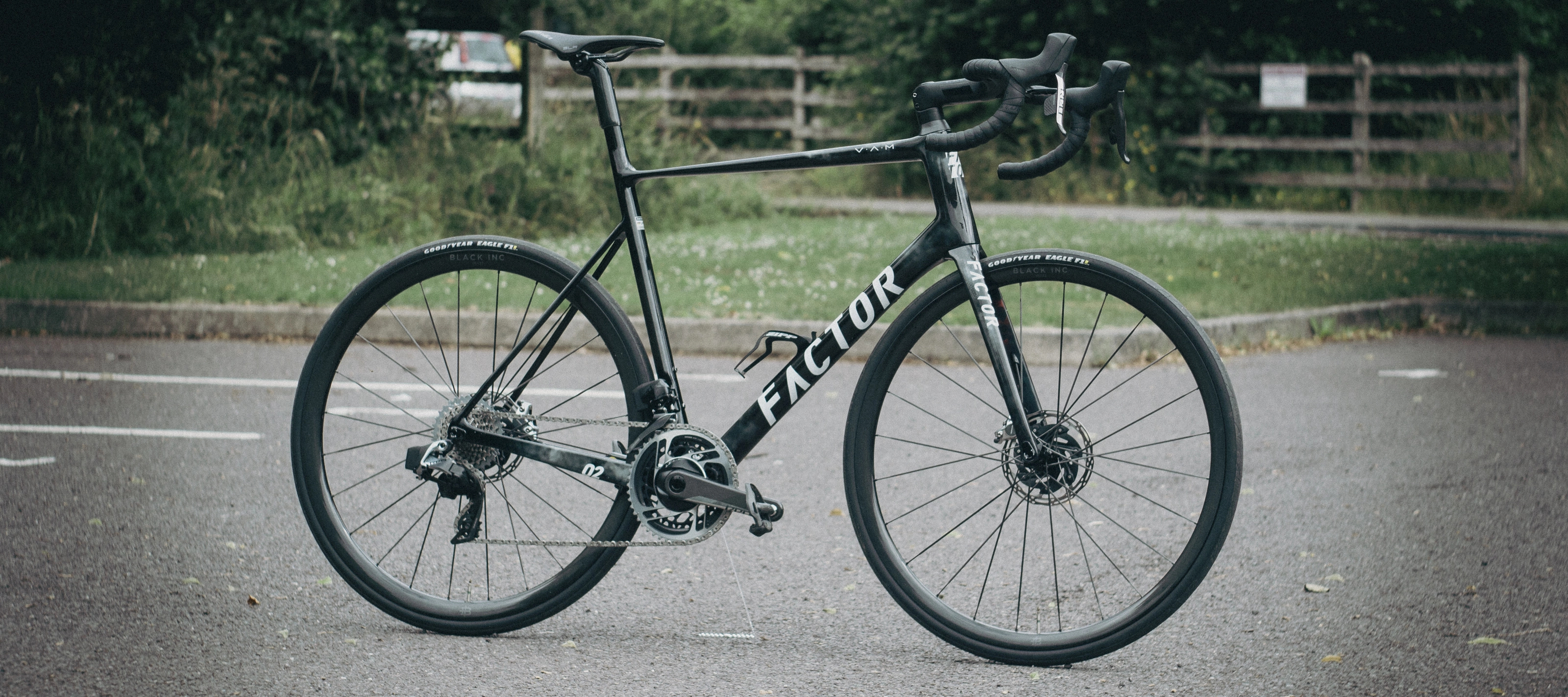
Specifications
Reasons to buy
Reasons to avoid
✅ You want low weight and aerodynamics: Factor gives you a sub-6.8kg bike weight, but doesn't ignore aerodynamics
✅ You want pro-level power transfer: The latest model O2 VAM doesn't compromise on frame stiffness and is 30 percent stiffer than its predecessor
❌ You want adjustability: There's a single-piece cockpit, while the seatmast limits saddle height adjustment
❌ You want an aero all-rounder: The O2 VAM is a focussed lightweight bike, while the Ostro VAM is almost as light and more aero, as well as having a standard seatpost
There's an embarrassment of performance options from Factor, with the O2 VAM its pro-level climber's bike and the Ostro VAM an aero all-rounder that's almost as light and more aero.
Despite its sub-7kg weight, the O2 VAM also has aerodynamic tube profiles and Factor says it saves 12 watts over its predecessor.
The low weight is courtesy of a couple of features. First, the integrated seatmast shaves grams compared to a conventional setup, although that does limit adjustability. Secondly, a wheelset from Factor's Black Inc component brand that weighs a claimed 1,142g. Black Inc also supplies the integrated cockpit.
The ride is aggressive and responsive, with Factor saying that the new bike is 35 percent stiffer at the bottom bracket than the previous model. The lower-profile wheels and skinny tubes make the O2 VAM fairly resistant to crosswinds. It's a performance bike and so not the most compliant though.
You can read more in our Factor O2 VAM review
Best carbon all-road bike
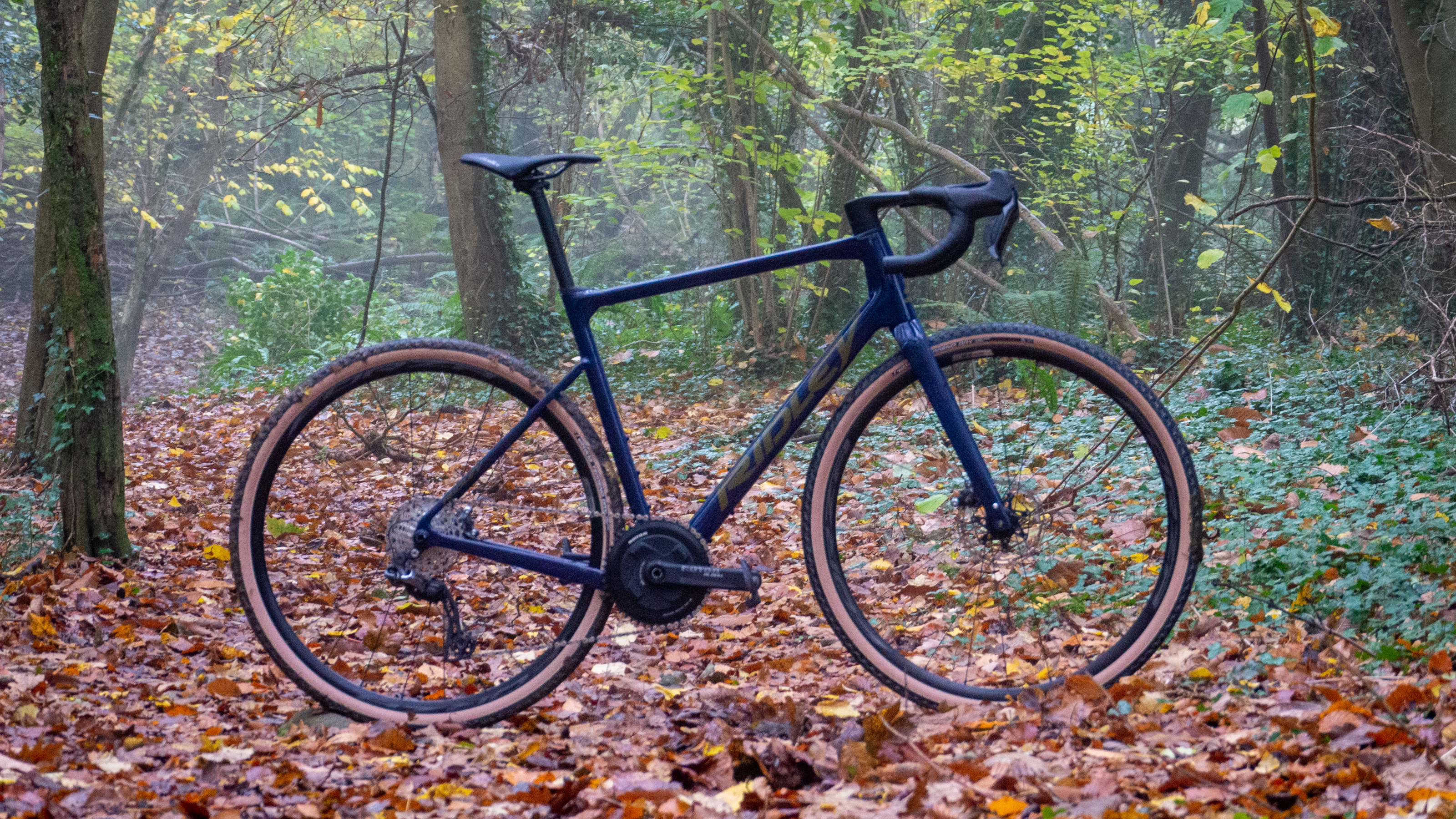
Specifications
Reasons to buy
Reasons to avoid
✅ You want a to be able to switch easily from road to off-road riding: Change a few components and the Grifn can head off-road or take on fast endurance rides.
✅ You want to choose the spec that meets your ride objectives: Ridley can equip the Grifn with a gravel groupset and components, or you can choose an endurance road spec.
❌ You want more off-road capability: The Grifn will not take you as far off-road as a full-on gravel bike.
❌ You plan to keep to the tarmac: A more road-oriented endurance bike might better suit your objectives.
Belgian brand Ridley's broad range of bikes spreads from aero road through to extreme gravel. Somewhere in the middle sits the Grifn and the more premium Grifn RS.
The 40mm tyre clearance and a 1x groupset allows you to set the Grifn up with gravel tyres for fairly serious off-road duties or slot in slightly narrower tyres for road use. Ridley offers 1x and 2x specs as well as a Classified rear hub so you can choose how off-road you want your Grifn.
Despite its versatile configuration options, a wide range of mounting points, mudguard eyes and even dynamo cable routing, the Grifn's geometry is pretty racy, while a one-piece integrated cockpit offers aero gains. The bike feels reassuring on descents and is fast on climbs, although we reckoned a tyre swap-out was in order for damp woodland trails.
Read our Ridley Grifn first ride review for more.
Also consider
Below, you'll find a longer list of bikes that we've reviewed and that are worthy of consideration if you're looking for a carbon bike. We've split them up by genre, so you can compare like with like.
There's a link in each bike's name to take you to our detailed review.
Aero all-rounders
Cannondale SuperSix Evo – The SuperSix Evo mixes low weight, great handling and comfort in a bike that's also impressively aero.
Factor Ostro VAM – The Ostro VAM was the most aero bike in our wind tunnel testing, but it's also low in weight, handles well and offers a wide range of spec options.
Ridley Falcn RS – Another bike that mixes aerodynamics with a competitively low weight and sharp handling.
Trek Madone Gen 8 – Trek's slimmed down Madone boasts similar aero performance to the Gen 7 bike, but in a slimmed-down lightweight package.
Van Rysel RCR – Coming from Decathlon, the RCR and RCR Pro offer an aero/all-rounder package with balanced, responsive handling.
Aero bikes
BMC Teammachine R – The first of two Teammachines here (see the SLR below), the Teammachine R is designed for fast rides, with Formula 1 know-how tuning its aerodynamics.
Canyon Aeroad – The Aeroad is fast, stiff and aggressive, with good specs at a range of price points.
Van Rysel RCR-F – Designed to be more aero than the RCR above, the RCR-F from Decathlon's in-house bike brand is stiffer too, although the low front end may not suit all riders.
Endurance bikes
Canyon Endurace – Light and nimble, the Endurace has a performance edge and higher specs include in-frame storage.
Cervelo Caledonia – We rated the previous generation bike's comfort and all-terrain capability, while the updated bike includes in-frame storage and its compliance is claimed to have been increased.
Fara F/All-Road – The F/All-Road adds off-tarmac capability with room for 38mm tyres and comfortable geometry. There are 27 mounting points on the frame and magnetic attachments for custom bags.
Liv Avail – The women's Liv Avail and the equivalent Giant Defy have relaxed geometry, quality specs and a comfortable ride position for longer rides.
Pinarello Dogma X – The Dogma X is the endurance-focused sibling of the racy Dogma F. It's designed for greater comfort and the geometry is more relaxed, though it's just as expensive as the F.
Trek Domane – The Domane offers 38mm tyre clearance, a downtube storage compartment and Trek's IsoSpeed rear decoupler for a smoother ride.
Lightweight bikes
Bianchi Specialissima – Very lightweight at just 6.6kg for our review bike, the Specialissima is also aero, making it fast on the flat, not just uphill.
BMC Teammachine SLR – The stablemate of the Teammachine R, above, still has aero features, but majors on its low weight of just over 7kg.
Specialized Aethos – One of the few top tier bikes to still include round tubes and external cables, the Aethos is also very low in weight at just over 6kg for the top spec bike.
Wilier Verticale SLR – Our XL size test bike weighed 6.8kg. Its tubes are roundish, but it climbs well and has front-end integration to increase its aero performance.
How to choose the best carbon road bike
What should I look for in a carbon road bike?
Our general advice when looking to buy a road bike is to spend as much as you can on the frame and worry less about the components bolted onto it. It's easy to upgrade wheels, handlebars and groupsets, but you're stuck with the frame.
What type of bike do I want?
As with any bike, you should choose a carbon road bike that suits your needs, whether that's an endurance bike, a lightweight bike or an aero bike.
Aero all-rounders look to include aero features while still offering a low weight. They tend to be more comfortable than a full-on aero bike and the ride position is often less aggressive, which is likely to suit amateur riders better. Dedicated aero bikes tend to have a lower handlebar position designed to get the rider into the most efficient position possible.
If you like to ride a mix of tarmac and unpaved surfaces, many of the best endurance bikes offer the space to fit wide tyres. All-road bikes are a newer category that is designed even more around on/off-road riding, while a gravel bike may be a better choice if you predominantly want to ride more challenging off-road trails.
Finally, although many of the best carbon bikes are designed to be unisex, the best women's road bikes offer female-specific touchpoints and may be available in smaller sizes.
How much do I want to spend?
Having decided the type of bike you want, the next big question is how much to spend.
Many of our bike reviews are for top spec bikes, but you'll usually find much lower-priced versions of the same bike. They may feature the same frame, but often there's a lower-grade mix of carbon used, which adds a couple of hundred grams to the frame weight. Geometry is usually the same though and ride characteristics are often tuned to be similar.
The additional weight usually comes from a lower spec groupset, components such as bars and saddle and, particularly, wheels. A bike's wheels and many of the other components are easy to swap out though to shave some weight and increase performance.
If you want to hit a lower price point, many of the best carbon road bikes have aluminium road bike siblings.
What size bike do I need?
Finally, you need to be comfortable on your bike, regardless of what it's designed to do.
That means choosing the right-sized bike first and foremost. Bike makers will have guidance on their sites and you should also talk to a bike shop if you're not sure.
You should budget for a bike fit too. Compared to the price of a new road bike, it's inexpensive. A bike fitter will ensure that your components are correctly set up for you and may swap out items that are not quite right.
Often the price of a bike fit is discounted when you buy a new bike, or a bike fit may even be included as part of the purchase.

Carbon road bikes explained
What's the history of carbon fibre use for road bikes?
Carbon fibre use for bicycle frames is fairly recent, with steel the preferred material until the mid-1980s. Aluminium alloy took over from steel and it was only around 2000 that carbon fibre really took off as a bicycle frame material.
It remained expensive due to the need to hand-build each frame, but over the last 20 years or so, it's become more affordable. Even some budget bikes may be made of carbon, although aluminium alloy remains the preferred material for many of the best budget road bikes.
How are carbon road bikes made?
Unlike metals, carbon fibre's properties are different in different dimensions, so it's stiff in one direction and flexible in the other. Design the fibre lay-up right and you can fine-tune a bike frame's ride properties to suit the bike's ride objectives.
Carbon fibres are embedded in epoxy resin and the frame is laid up in sheets around template bladders. The frame is placed in a heavy metal mould that is cured in an oven to harden and preserve the frame's structure. Higher spec frames may be made lighter by squeezing out more of the resin so that there's a higher ratio of carbon fibre to resin in the finished frame.
The layup of a carbon road bike is essentially a really difficult 3D jigsaw puzzle with upwards of 400 individual pieces and the order in which they are put together will ultimately define the ride characteristics. Depending on the orientation of the fibres, using the same mass and modulus of carbon can yield a rigid structure or one that is noodly and flexible.
You'll see unidirectional carbon fibre referred to by brands. This refers to the carbon fibre sheets themselves, although these will be placed in different orientations within the frame to produce the desired ride characteristics.
What is carbon fibre modulus?
The modulus refers to the stiffness of the individual fibres. Higher modulus carbon is produced by refining each fibre to make it smoother and thinner, allowing for higher tensile strength. While high-modulus carbon is stiff, it's also brittle, and a bike made of exclusively high-modulus carbon would likely break on the first impact, whether that be from road debris or a crash. Lower-modulus carbon isn’t as stiff, but it is also less delicate.
No matter the frame, it will be made from a mix of different modulus carbon fibre sheets strategically placed throughout for the best possible performance and strength.
Higher modulus carbon fibre is more expensive and stronger, so you'll typically find a greater proportion of high modulus carbon fibre used in pricier bike frames.
What is a monocoque frame?
A French term meaning single shell, a monocoque is a structural system where loads are supported through an object's external skin, like an egg — or a bicycle.
When the term is applied to bicycles, it's a fancy way of saying the entire frame is moulded in one piece. True monocoque frames are becoming increasingly rare, and in most cases, the front and rear triangles are manufactured in two separate pieces and then bonded together. When you see a brand using a term like semi-monocoque or modular monocoque, this is how the frame is made.
What are the advantages of a carbon road bike?
1. Higher-spec carbon frames can be very lightweight but also stiff and strong.
2. Designers can incorporate compliance zones in a carbon frameset, to provide a more comfortable ride while keeping the frame stiff and responsive overall.
3. Carbon fibre doesn't rust or corrode, although it's important to look after a carbon frame and keep it clean to avoid galvanic corrosion between carbon and metal parts, which is facilitated by salt water and sweat.
And what are the disadvantages?
1. In general, a carbon bike will cost more than an alloy bike of equivalent spec, due to the extra cost of the materials and labour needed to produce it.
2. A lower-priced carbon frame may not be much lighter than a similarly priced alloy frame. While the alloy frame can be made of more expensive tubing, you may get lower-spec carbon with more resin content in a carbon fibre bike for a similar price.
3. Carbon frames can be fragile. It's easy to write off a frame in a crash and damage may not be easy to see, due to the tendency of the carbon layers to delaminate on the inside of the tubing, where they're invisible.
How we test
There's no substitute for riding to see how a bike performs. We'll ride over an extended period, in a range of conditions and over a mix of terrain and distances, to form a considered view of a bike's performance. Real-world testing has also been supplemented with our own third-party wind tunnel testing to determine their aerodynamic performance.
All our small team of testers have years of experience riding, as well as having worked in bike workshops and elsewhere in the bike industry, so we can also form a view of how easy a bike is to live with and highlight any spec or maintenance quirks.
We'll complete a detailed scorecard for each bike tested across a range of criteria and provide a detailed rationale for our decisions. You can read more about the Cyclingnews review process on our How We Test page.
The latest race content, interviews, features, reviews and expert buying guides, direct to your inbox!
Based on the Gold Coast of Australia, Colin has written tech content for cycling publication for a decade. With hundreds of buyer's guides, reviews and how-tos published in Bike Radar, Cyclingnews, Bike Perfect and Cycling Weekly, as well as in numerous publications dedicated to his other passion, skiing.
Colin was a key contributor to Cyclingnews between 2019 and 2021, during which time he helped build the site's tech coverage from the ground up. Nowadays he works full-time as the news and content editor of Flow MTB magazine.